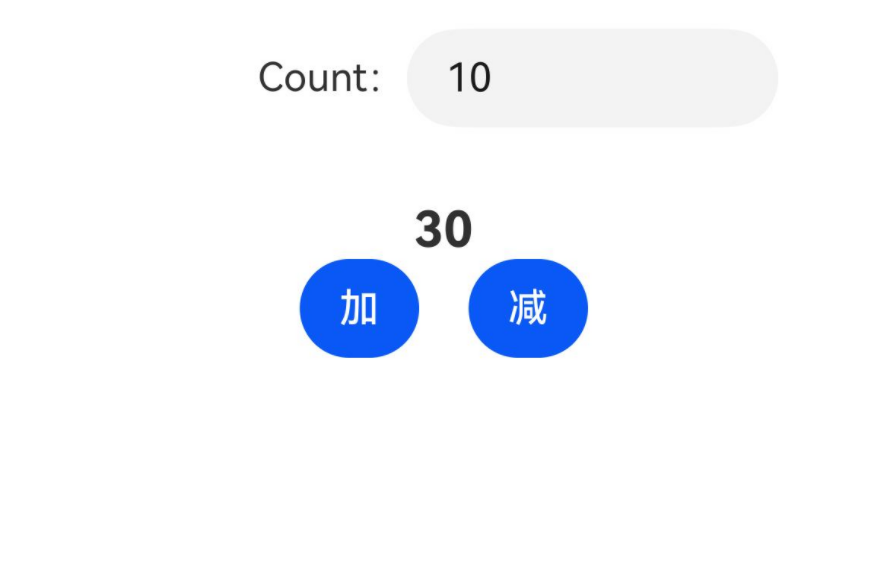HarmonyOS 鸿蒙Next中如何使用@State修饰的count变量实现计数值步进控制
4 回复
参考一楼回复。
更多关于HarmonyOS 鸿蒙Next中如何使用@State修饰的count变量实现计数值步进控制的实战系列教程也可以访问 https://www.itying.com/category-93-b0.html
 ```
```@Entry
@Component
struct CountPage {
@State number: number = 0;
@State count: string = '1';
build() {
Column() {
Row() {
Text('Count:')
TextInput({ text: this.count })
}
.width(150)
.height(60)
.alignItems(VerticalAlign.Center)
.margin({ bottom: 20 })
Text(this.number.toString())
.id('CountPageHelloWorld')
.fontSize(20)
.fontWeight(FontWeight.Bold)
Row() {
Button('加')
.onClick(() => {
this.number += Number(this.count);
})
.margin({ right: 20 })
Button('减')
.onClick(() => {
if (this.number >= Number(this.count)) {
this.number -= Number(this.count);
}
})
}
}
.height('100%')
.width('100%')
}
}
在HarmonyOS鸿蒙Next中,使用@State修饰的count变量实现计数值步进控制,可以通过以下方式实现。这里假设你正在使用ArkUI框架进行开发。
首先,你需要定义一个@State变量来存储计数值,例如:
[@State](/user/State) count: number = 0;
然后,你需要创建两个函数,一个用于增加计数值,另一个用于减少计数值。这两个函数将修改@State变量count的值:
@Action increaseCount() {
this.count += 1;
}
@Action decreaseCount() {
this.count -= 1;
}
在UI组件中,你可以绑定按钮的点击事件到这些函数上,以实现步进控制:
Row() {
Button('Increase') {
this.increaseCount();
}
.clickable()
Button('Decrease') {
this.decreaseCount();
}
.clickable()
Text(`Count: ${this.count}`)
}
上述代码中,两个按钮分别绑定了增加和减少计数值的函数,而Text组件则用于显示当前的计数值。
这样,当你点击“Increase”按钮时,计数值会增加1;点击“Decrease”按钮时,计数值会减少1。
如果问题依旧没法解决请联系官网客服,官网地址是 https://www.itying.com/category-93-b0.html,








